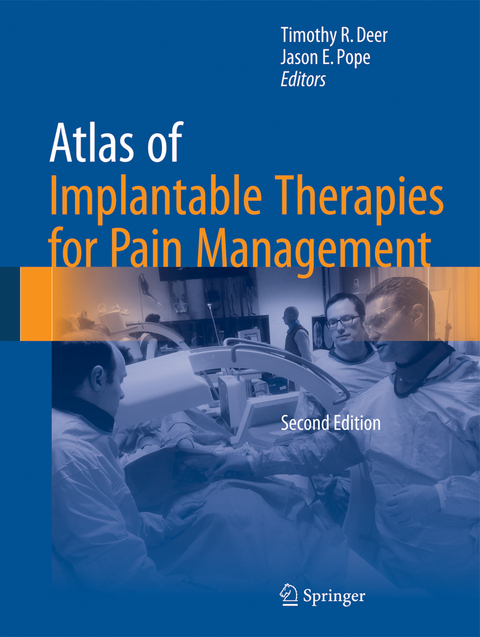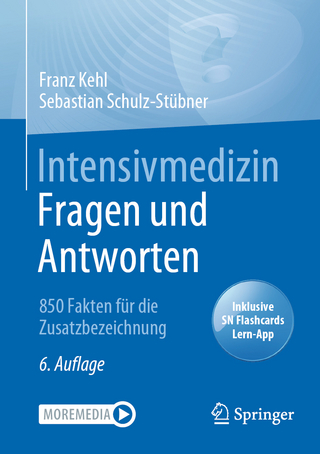
Atlas of Implantable Therapies for Pain Management
Springer-Verlag New York Inc.
978-1-4939-2109-6 (ISBN)
From reviews of the First Edition:
“For the practitioner new to the field of implantable therapies, this book shows the scope of this particular branch of pain medicine. It is full of good advice on techniques and how to avoid complications."
British Journal of Clinical Pharmacology
"All practicing pain physicians, whether their background is in anesthesia or neurosurgery, will find [this atlas] very useful…beautifully written and well-illustrated with x-ray images and pictures…a must-read for every pain fellow and a very useful one for every pain physician."
Doody’s Review Service
Now in its Second Edition, this atlas remains an essential guide to the treatment of pain using neuromodulation and is written for all implanters, from beginners to the most advanced practitioners. It has been significantly expanded with many brand new chapters and figures and thoroughly updated to address new techniques, targets, waveforms, and concepts that have emerged since publication of the last edition and now provides even more detailed coverage of patient safety, including infection control and reduction of bleeding risks.
The new and returning physicians who have collaborated on the Second Edition are world-class in their research, clinical expertise, and ethics of practice. They have endeavored to make each segment of the atlas a great learning event through careful integration of extensive photographs, illustrations, and detailed instructions and to create a resource that helps to improve practice and enhance outcomes while complementing fellowship training, peer-to-peer experiences, and hands-on continuing medical education.
Timothy R. Deer, MD, DABPM Editor Dr. Deer is the President and Chief Executive Officer of The Center for Pain Relief, Inc. in Charleston, West Virginia and Clinical Professor of Anesthesiology, University of West Virginia School of Medicine, Morgantown. He is President-Elect of the International Neuromodulation Society and a former member of the board of directors of the American Society of Interventional Pain Physicians. He serves on the editorial committee of the journals Neuromodulation, Pain Medicine, and Pain Physician. Dr. Deer is Editor-in-Chief of Comprehensive Treatment of Chronic Pain by Medical, Interventional, and Integrative Approaches: the AMERICAN ACADEMY of PAIN MEDICINE Textbook on Patient Management (Springer, 2013). Jason E. Pope, MD Associate Editor Dr. Pope is the President of Summit Pain Alliance in Santa Rosa, California. He has recently been appointed to the North American Neuromodulation Society board as a Director-at-Large and serves as Secretary of the California Society of Interventional Pain Physicians. During residency training at Vanderbilt University Medical Center in Nashville, Tennessee, he served as faculty with a dual appointment at the Veteran Affairs Hospital and Vanderbilt University Medical Center as Assistant Professor of Anesthesiology. He completed fellowship training in pain medicine at The Cleveland Clinic which subsequently invited to join the faculty as Associate Staff.
Part I. Neurostimulation: Spinal Cord.- 1. History of Neurostimulation.- 2. Patient Selection.- 3. Disease Indications.- 4. Preoperative Evaluation for Spinal Cord Stimulation.- 5. Perioperative Precautions for Infection Control.- 6. Needle Placement for Percutaneous Spinal Cord Stimulation of the Back and Legs.- 7. Physician-guided Lead Placement: Driving the Lead to the Target Location.- 8. Stimulation of the Spinal Cord by Placement of Surgical-Based Paddle Leads.- 9. Programming Spinal Cord Stimulation Systems.- 10. Anchoring Percutaneous Leads During Permanent Device Placement.- 11. Tunneling Spinal Cord Stimulation Systems.- 12. Pocketing Techniques for Spinal Cord Stimulation and Peripheral Nerve Stimulation.- 13. Wound Closure.- 14. Wound Healing.- 15. Complications of Spinal Cord Stimulation.- 16. Stimulation of the Nervous System to Treat Neuropathic Pain of the Foot.- 17. Sacral Nerve Root Stimulation for the Treatment of Pelvic and Rectal Pain.- 18. Selective Nerve Root Stimulation: Facilitating the Cephalocaudal “Retrograde” Method of Electrode Insertion.- 19. Neurostimulation for the Treatment of Anterior Abdominal Pain.- 20. Electromyographic/Somatosensory-Evoked Potential Monitoring During Thoracolumbar Spinal Cord Stimulation.- 21. Electromyographic/Somatosensory Evoked Potential Monitoring During Sacral Neuromodulation.- 22. The Future of Neurostimulation.- 23. Spinal Cord Stimulation of the Dorsal Root Ganglion for the Treatment of Pain.- 24. High-Frequency Stimulation of the Spinal Cord.- 25. Burst Stimulation: An Innovative Waveform Strategy for Spinal Cord Stimulation.- Part II. Neurostimulation: Peripheral Nerve and Peripheral Nerve Field.- 26. Stimulation of the Extraspinal Peripheral Nervous System.- 27. Peripheral Nerve Stimulation for the Treatment of Knee Pain.- 28. Neurostimulation of the Upper Extremity by Conventional Peripheral Nerve Stimulation.- 29. Ultrasound Guidance for the Placement of Peripheral Nerve StimulationDevices.- 30. High-Frequency Electric Nerve Block to Treat Postamputation Pain.- 31. Peripheral Nerve Stimulation Miniaturization.- Part III. Neurostimulation: The Cranium and the Head.- 32. Neurostimulation: Stimulation of the Cranium and Head: Stimulation of the Deep Brain for the Treatment of Chronic Pain.- 33. Stimulation of the Motor Cortex to Treat Chronic Pain.- 34. Stimulation of the Peripheral Nervous System: Occipital Techniques for the Treatment of Occipital Neuritis and Transformed Migraine.- Part IV. Drug Delivery.- 35. History of Intrathecal Drug Delivery.- 36. Selection and Indications for Intrathecal Pump Placement.- 37. Placement of Intrathecal Needle and Catheter for Chronic Infusion.- 38. Securing and Anchoring Permanent Intrathecal Catheters.- 39. Tunneling Permanent Intrathecal Catheters.- 40. Pocketing for Intrathecal Drug Delivery Systems.- 41. Drug Selection for Intrathecal Drug Delivery.- 42. Intrathecal Pump Refills.- 43. Complications of Intrathecal Drug Delivery.
| Zusatzinfo | XIV, 322 p. |
|---|---|
| Verlagsort | New York |
| Sprache | englisch |
| Maße | 210 x 279 mm |
| Themenwelt | Medizin / Pharmazie ► Medizinische Fachgebiete ► Anästhesie |
| Medizinische Fachgebiete ► Chirurgie ► Neurochirurgie | |
| Medizin / Pharmazie ► Medizinische Fachgebiete ► Onkologie | |
| Medizin / Pharmazie ► Medizinische Fachgebiete ► Schmerztherapie | |
| Medizin / Pharmazie ► Studium | |
| Schlagworte | Implantable pain therapy • Intrathecal pumps • Neuromodulation • Pain Medicine • Peripheral nerve stimulators • spinal cord stimulators |
| ISBN-10 | 1-4939-2109-6 / 1493921096 |
| ISBN-13 | 978-1-4939-2109-6 / 9781493921096 |
| Zustand | Neuware |
| Informationen gemäß Produktsicherheitsverordnung (GPSR) | |
| Haben Sie eine Frage zum Produkt? |
aus dem Bereich


